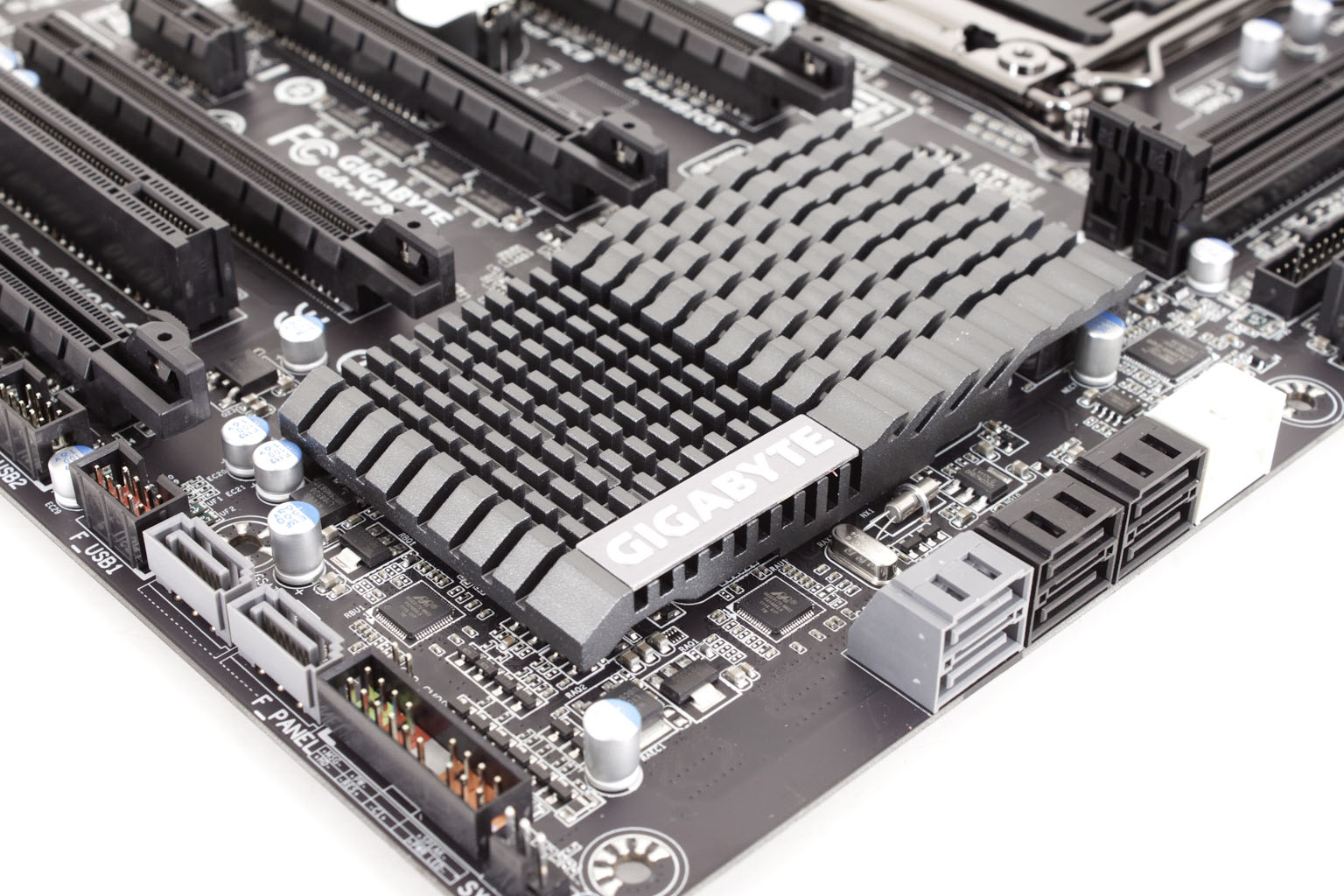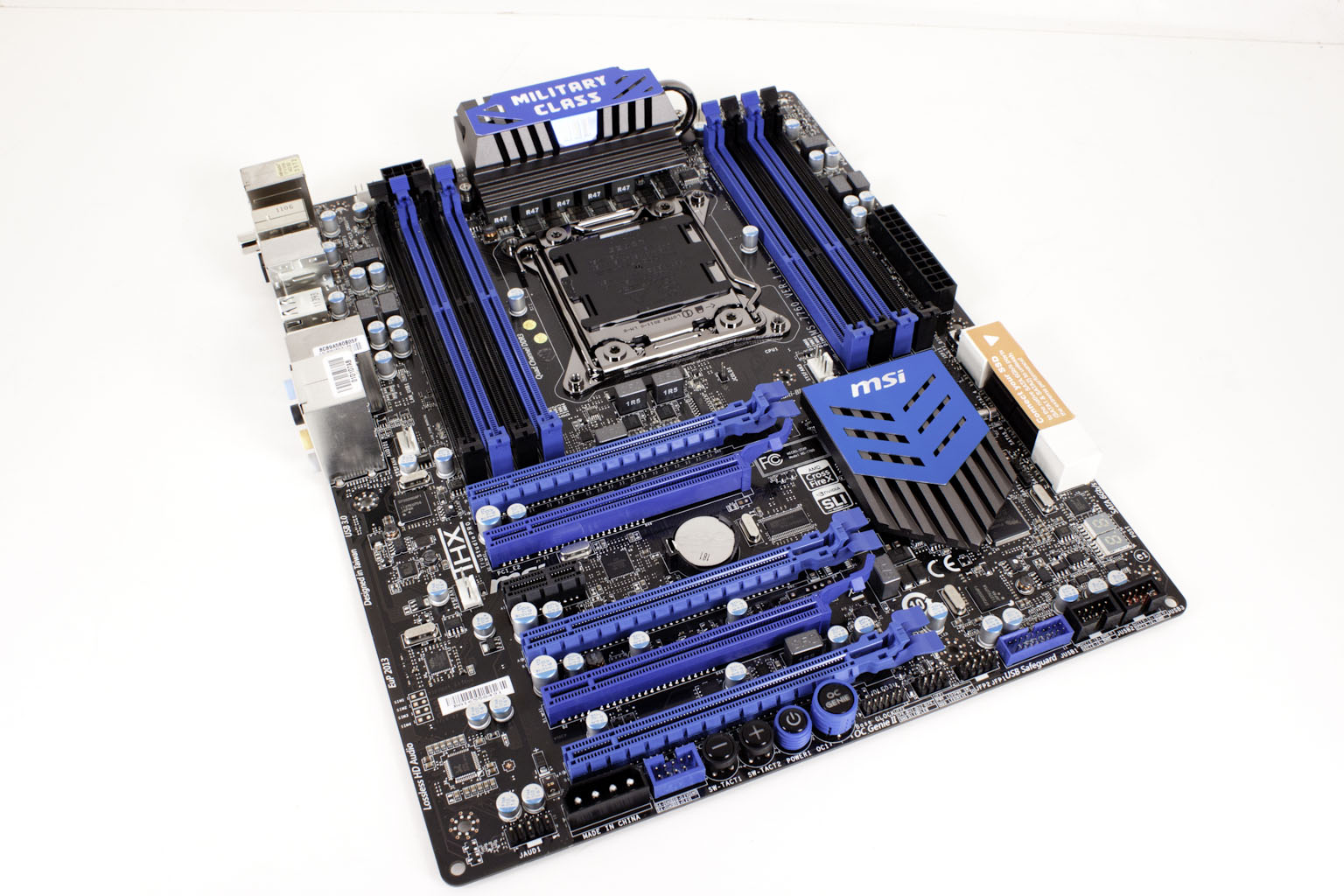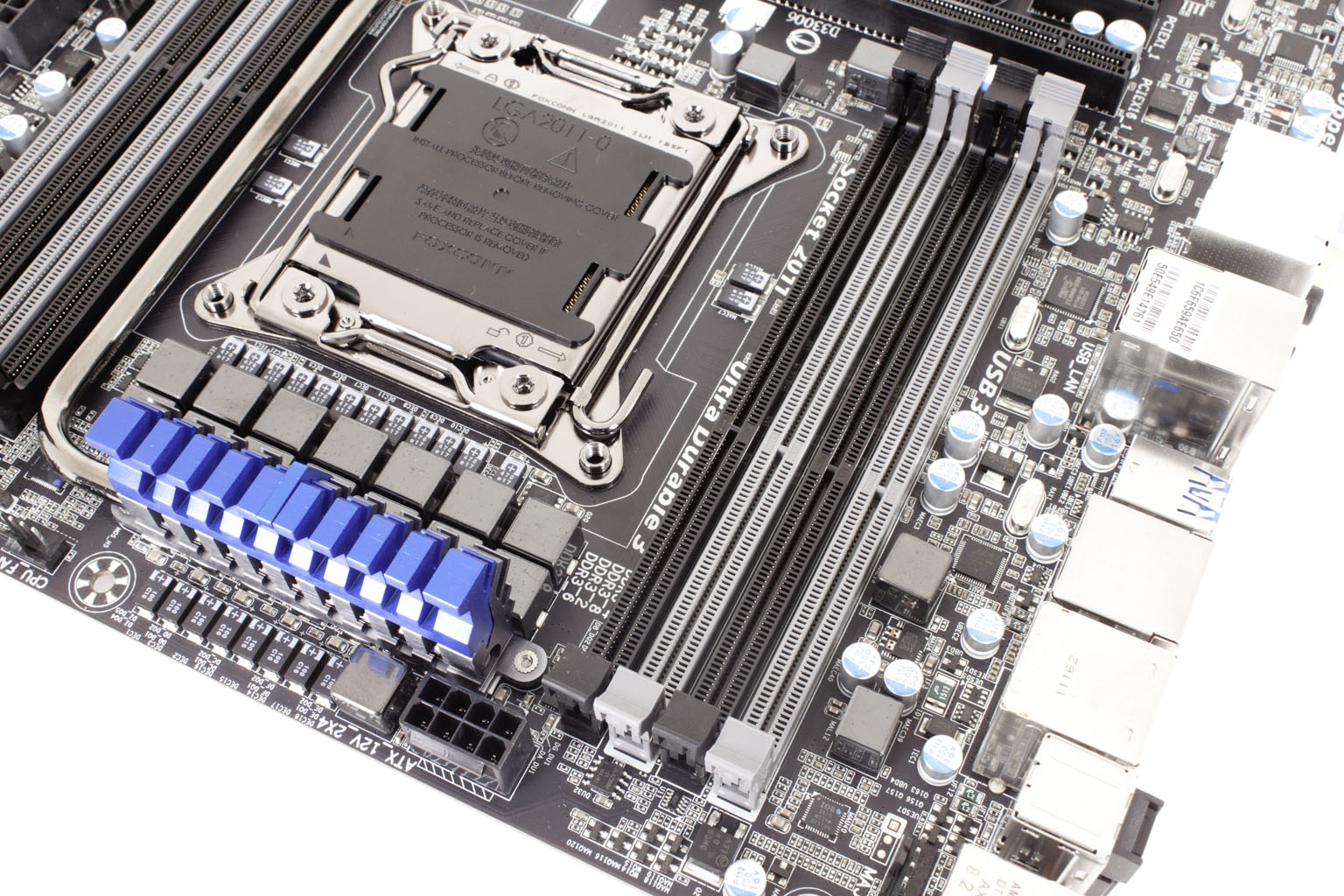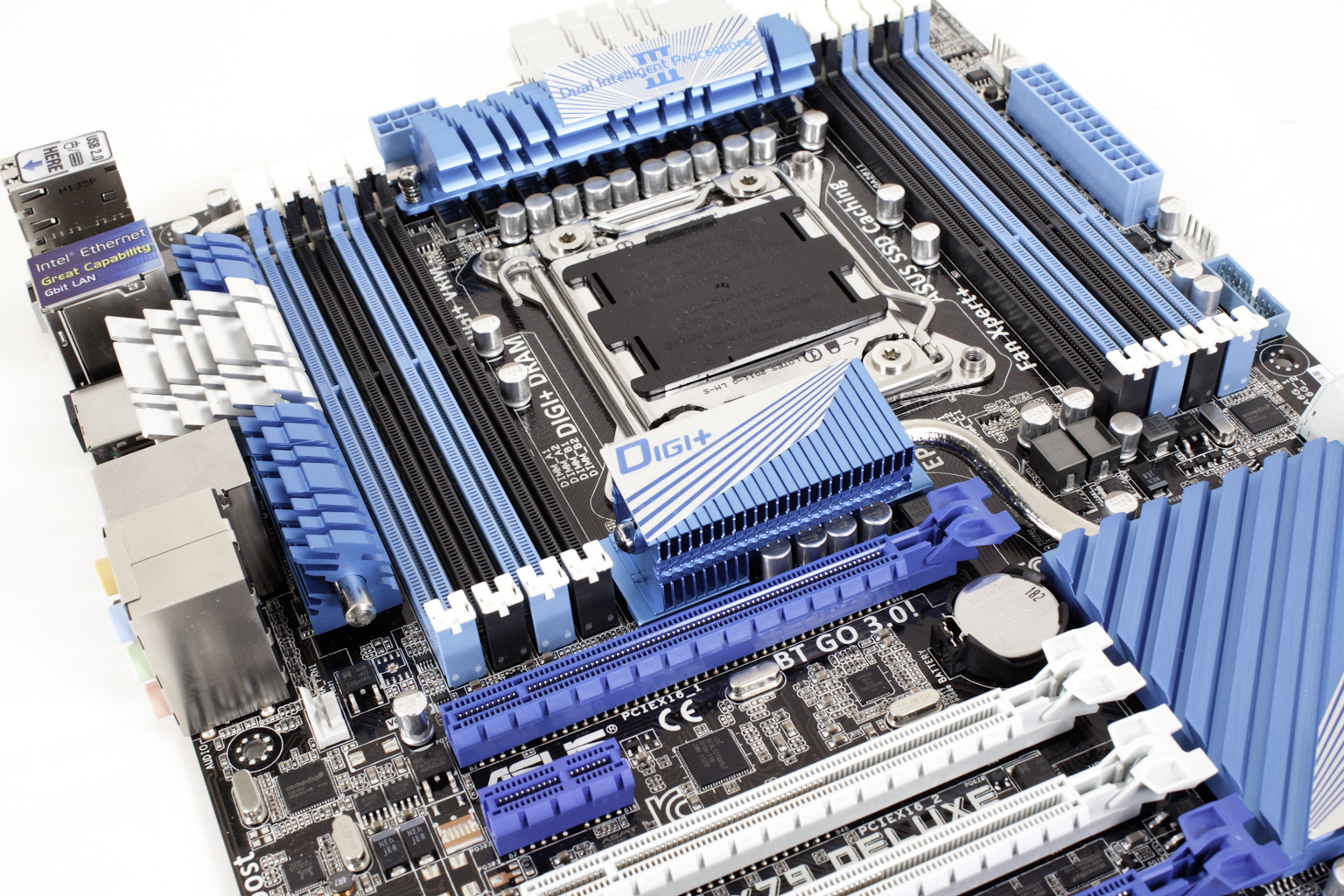Motherboards
 Earlier this year when we visited Gigabyte during CES they reiterated something that they said about three years ago. They are committed to providing a much better performing product and are gearing themselves more and more toward the enthusiast and gamer’s market. We have watched them make this shift since we first started working with them back in early 2005. Now 6+ years later we can say they have made this transition well. Their lineup has become much more diversified with a good separation of products. We have already shown you some of the top end boards like the G1.Assassin2 and the X79-UD5 and have goe though the design and features of the X79-UD3 so now we can tell you how this board really performs. Let’s take a look.
Earlier this year when we visited Gigabyte during CES they reiterated something that they said about three years ago. They are committed to providing a much better performing product and are gearing themselves more and more toward the enthusiast and gamer’s market. We have watched them make this shift since we first started working with them back in early 2005. Now 6+ years later we can say they have made this transition well. Their lineup has become much more diversified with a good separation of products. We have already shown you some of the top end boards like the G1.Assassin2 and the X79-UD5 and have goe though the design and features of the X79-UD3 so now we can tell you how this board really performs. Let’s take a look.
- Details
- By Sean Kalinich
- Hits: 24031
Read more: Gigabyte's X79-UD3 Runs Through our Performance...
 With the apparent delay of Intel Ivy Bridge and of course the Z77 chipset that goes with it) we there is going to be a continued demand for the X79 chipset and the pretty much every flavor of the LGA2011 CPU. To be honest I think that even after Ivy Bridge there will be a demand as the replacement for the LGA 2011 CPUs will not hit the market until around Q4 2012 or even later. So with that in mind we are taking a look at what at first glance appears to be a low cost X79 motherboard from Gigabyte. However, once you take a look at it you just might begin to see the serious overclocking and GPU benchmarking potential that it has. Let’s take a look at the Quad-SLI/Crossfire capable X79-UD3 from Gigabyte.
With the apparent delay of Intel Ivy Bridge and of course the Z77 chipset that goes with it) we there is going to be a continued demand for the X79 chipset and the pretty much every flavor of the LGA2011 CPU. To be honest I think that even after Ivy Bridge there will be a demand as the replacement for the LGA 2011 CPUs will not hit the market until around Q4 2012 or even later. So with that in mind we are taking a look at what at first glance appears to be a low cost X79 motherboard from Gigabyte. However, once you take a look at it you just might begin to see the serious overclocking and GPU benchmarking potential that it has. Let’s take a look at the Quad-SLI/Crossfire capable X79-UD3 from Gigabyte.
- Details
- By Sean Kalinich
- Hits: 20793
 After taking a look over the MSI X79A-GD65(8D) motherboard and some of MSI’s design choices (and the benefits they bring) we have dove into our performance testing. You may remember that we had concerns about the way the PCIe slots were segmented into Gen3 and Gen2. To check and see what effect (if any) this might have on performance we ran some of our tests with the GPU in the Gen2 slot and some in the Gen3 slot. We were more than a little surprised at what we found out. So let’s get into the performance half of our review of the MSI X79A-GD65(8D) and see what we found.
After taking a look over the MSI X79A-GD65(8D) motherboard and some of MSI’s design choices (and the benefits they bring) we have dove into our performance testing. You may remember that we had concerns about the way the PCIe slots were segmented into Gen3 and Gen2. To check and see what effect (if any) this might have on performance we ran some of our tests with the GPU in the Gen2 slot and some in the Gen3 slot. We were more than a little surprised at what we found out. So let’s get into the performance half of our review of the MSI X79A-GD65(8D) and see what we found.
- Details
- By Sean Kalinich
- Hits: 33306
 Not that long ago we talked to you about the features and design choices that Gigabyte made on the X79-UD5. This board is at the upper end of Gigabyte’s X79 lineup although it is not what you would consider an enthusiast board. Despite this Gigabyte has given it many of their enthusiast level features like their dual 3D BIOS, 3D power and some of the overclocking potential that we would expect from Gigabyte. Now it is time for us to dive into the usability and performance. So let’s see exactly how the X79-UD5 performs.
Not that long ago we talked to you about the features and design choices that Gigabyte made on the X79-UD5. This board is at the upper end of Gigabyte’s X79 lineup although it is not what you would consider an enthusiast board. Despite this Gigabyte has given it many of their enthusiast level features like their dual 3D BIOS, 3D power and some of the overclocking potential that we would expect from Gigabyte. Now it is time for us to dive into the usability and performance. So let’s see exactly how the X79-UD5 performs.
- Details
- By Sean Kalinich
- Hits: 21032
 One of the things that make Asus products so enticing is simply the number of add-in features that you get with almost every level of product. I am not sure if all of these features would ever be used by one single consumer, but they are there and all of them work. These little extras can make it challenging to properly review an Asus board (they certainly take more time to test out properly) as most of these are not just simple software adds. With the launching of Asus’ X79 line up the feature list increased as Asus pushed more of the ROG line’s signature items down into the top level of the mainstream products. It makes for some very well rounded products. While we were busy testing out the normal feature set we also had to find ways to cover some of the new items like SSD caching and USB 3.0 Boost for both performance and ease of use. We have already told you about the features, let’s get into the performance numbers and see what we have with the Asus P9X79 Deluxe.
One of the things that make Asus products so enticing is simply the number of add-in features that you get with almost every level of product. I am not sure if all of these features would ever be used by one single consumer, but they are there and all of them work. These little extras can make it challenging to properly review an Asus board (they certainly take more time to test out properly) as most of these are not just simple software adds. With the launching of Asus’ X79 line up the feature list increased as Asus pushed more of the ROG line’s signature items down into the top level of the mainstream products. It makes for some very well rounded products. While we were busy testing out the normal feature set we also had to find ways to cover some of the new items like SSD caching and USB 3.0 Boost for both performance and ease of use. We have already told you about the features, let’s get into the performance numbers and see what we have with the Asus P9X79 Deluxe.
- Details
- By Sean Kalinich
- Hits: 26512
More Articles …
Page 5 of 9



